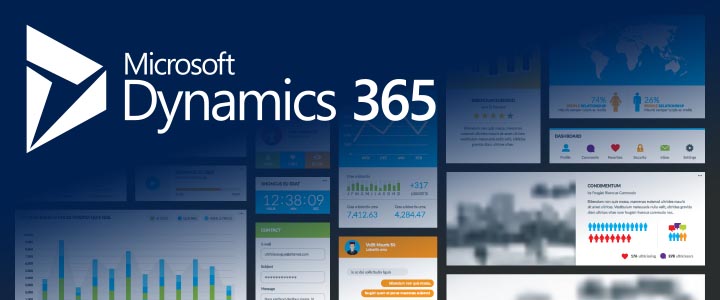- May 30, 2025
- Posted by: Vineeta Birthlal
- Categories:

Financial reconciliation is one of the most important but time-consuming tasks in any finance department. Whether you’re part of a small business or a large enterprise, reconciling accounts every month, quarter, or year is a must. But the process often involves manually checking thousands of transactions, identifying mismatches, and updating records across several spreadsheets.
The good news is that Microsoft Excel now includes a new feature called Copilot for Finance. This intelligent assistant uses artificial intelligence (AI) to help with tasks such as data reconciliation, including matching financial records and identifying discrepancies. In this blog, we will explore how Copilot works, the problems it solves, and how you can use it to save hours of manual work.
What Is Financial Reconciliation?
Financial reconciliation means checking two sets of financial records to make sure they match. It helps confirm that the money recorded as spent or transferred is the same as the actual amount that left the account.
Examples include:
- Comparing a bank statement with an internal cash report
- Matching supplier invoices with payment records
- Aligning sales reports with customer payments
The goal of reconciliation is to detect discrepancies like:
- Duplicate entries
- Missing records
- Incorrect amounts
- Transactions entered in the wrong period
These errors can lead to financial losses, inaccurate reports, or even compliance issues.
The Challenges of Manual Reconciliation
Let’s first understand why reconciliation is often such a burden. Here are some typical challenges that finance teams face when doing reconciliation in Excel manually:
1. Time-Consuming
Reconciling even a small data set of 100 transactions can take hours. You need to:
- Sort the data
- Match records line by line
- Look for duplicates or missing values
- Create a summary or report manually
2. Prone to Errors
When reconciliation is done manually, it is easy to:
- Miss a mismatch
- Overlook a duplicate
- Enter incorrect formulas
- Forget to check some entries
These errors can lead to major reporting mistakes.
3. Complex Formulas
To automate even a small part of the reconciliation process, you need to use functions like VLOOKUP, IFERROR, INDEX, and MATCH. These are powerful, but not easy for everyone to use.
4. Poor Visibility
Manually checking mismatches does not provide a good summary view. You have to go through each entry to understand where the problems are.
What Is Copilot for Finance?
Copilot for Finance is a new AI-powered assistant built into Microsoft Excel. It is part of Microsoft 365’s Copilot tools that use natural language and machine learning to help users with everyday tasks.
In the context of finance, Copilot helps by:
- Understanding what you need based on your data
- Writing formulas automatically
- Finding mismatches between records
- Suggesting corrections
- Generating summaries and visual reports
Most importantly, you can talk to Copilot using simple language — no technical or coding skills needed.
Key Benefits of Copilot in Reconciliation
Let’s break down how Copilot can help at each stage of the reconciliation process.
1. Auto-Matching Transactions
Copilot can compare two columns or two tables and automatically match entries based on date, amount, or description. You don’t have to manually use VLOOKUP or sort data.
Example Command:
“Match transactions between Sheet1 and Sheet2 by date and amount.”
2. Finding Mismatches
Once it finishes matching, Copilot highlights items that are missing, duplicated, or different in value.
Example Command:
“Show unmatched entries between the two sheets.”
3. Duplicate Detection
Copilot can identify duplicates in a column or row — a task that usually takes multiple steps.
Example Command:
“Find duplicate amounts in Column B.”
4. Explaining Variance
If a transaction doesn’t match exactly, Copilot can provide a summary of the differences.
Example Command:
“Explain differences in cash report vs bank report.”
5. Summarizing Results
At the end of the process, Copilot can give you a quick summary of the reconciliation status, including matched, unmatched, and duplicate items. It can also turn the data into charts.
A Step-by-Step Example: Reconciling a Cash Report with a Bank Statement
Let’s walk through a simple reconciliation task to show how Copilot makes it easier.
Step 1: Prepare the Data
You have two data sets:
Cash Report (Sheet1)
| Date | Amount |
| Jan 1 | 1000 |
| Jan 2 | 500 |
| Jan 3 | 900 |
Bank Statement (Sheet2)
| Date | Amount |
| Jan 1 | 1000 |
| Jan 2 | 500 |
| Jan 4 | 900 |
Step 2: Use Copilot to Match Records
Open the Copilot panel in Excel and type a simple instruction, such as:
“Compare the amounts in Sheet1 and Sheet2 based on the date.”
Copilot will automatically find and match the records that have the same date and amount in both sheets.
Copilot responds:
- Jan 1 – Matched
- Jan 2 – Matched
- Jan 3 – Missing in bank
- Jan 4 – Missing in cash report
Step 3: Review the Summary
Copilot can automatically create a table:
| Match Type | Count |
| Matched | 2 |
| Missing in Bank | 1 |
| Missing in Cash | 1 |
And even generate a bar chart:
matlab
CopyEdit
Reconciliation Summary
[Bar Chart]
Matched: ████████████████ 50%
Missing in Bank:███████ 25%
Missing in Cash:███████ 25%
This helps you see what’s wrong and where to take action.
Table: Manual vs Copilot Reconciliation
| Task | Manual Method | With Copilot |
| Match records | Use VLOOKUP or manual check | One sentence command |
| Find missing values | Filter and compare row by row | Copilot highlights them instantly |
| Remove duplicates | Use Remove Duplicates tool manually | Just ask Copilot |
| Create summary report | Use pivot tables and formulas | Copilot creates table and chart |
| Time spent | 1-3 hours | 10-15 minutes |
| Error rate | High (manual) | Low (AI-assisted) |
What You Need to Use Copilot
To use Copilot for Finance, you need:
- A Microsoft 365 subscription (Business or Enterprise)
- Copilot enabled in your Excel version
- Data organized in a structured table format (Excel Tables work best)
- Access to the internet (for Copilot to process requests)
You’ll find the Copilot icon in the Excel ribbon. Clicking it opens a sidebar where you can type your questions or commands.
Best Practices for Using Copilot in Reconciliation
Here are some tips to get the most out of Copilot:
1. Use Clean and Clear Data
Copilot works best when your data is:
- Well-formatted
- Has headers (Date, Amount, Description, etc.)
- Contains no merged cells or blank rows
2. Use Descriptive Commands
The more specific your request, the better Copilot performs. Examples:
- “Compare column A from Sheet1 with column A from Sheet2.”
- “List all rows where the amount differs by more than $10.”
3. Always Review the Output
While Copilot is powerful, it’s still an assistant — not a replacement for your judgment. Always review the suggestions and confirm the matches before finalizing reports.
Final Thoughts
Financial reconciliation is a necessary part of business, but it doesn’t have to be a painful one. Copilot for Finance in Microsoft Excel changes the game by automating the most tedious parts of the process.
By letting Copilot handle:
- Transaction matching
- Error detection
- Summarization
- Visualization
… you save time, reduce mistakes, and gain confidence in your reports.
It’s especially useful for:
- Accountants
- Financial analysts
- Small business owners
- Audit teams
With just a few commands, you can clean up, check, and explain your data — all within Excel.
Ready to Try It?
If you’re using Microsoft 365, check if Copilot is available in your Excel version. Then:
- Open your data files
- Click the Copilot icon
- Start by typing:
“Help me reconcile these two sheets.”
You’ll be surprised how much faster and easier the process becomes.
Would you like a free downloadable Excel template with sample data and Copilot prompts? Let me know — I’ll send one your way.
Take the Next Step with Al-Futtaim
At Al-Futtaim, we believe in empowering finance teams with smart, future-ready tools. If your organization is looking to streamline financial operations, reconcile data more efficiently, and improve reporting accuracy, our digital transformation experts can help.
We offer:
- Microsoft 365 and Copilot deployment services
- Finance-specific automation consulting
- Tailored Excel solutions and training for your teams
- End-to-end digital finance enablement
Connect with Al-Futtaim today to explore how Copilot for Finance can be integrated into your workflows — and help your team achieve more with less effort.
Contact us now to schedule a free consultation.



